Abstract
A transitional cell carcinoma of the urinary bladder was found in a beluga whale stranded in the St. Lawrence middle estuary. Various organs of this animal were submitted to high resolution gas chromatography coupled with mass spectrometry analysis. High frequency of urinary bladder cancer in the human population of the same area and the presence of carcinogenic compounds in the marine environment of this animal are discussed.
Concurrent isolation of Edwardsiella tarda from various organs of this whale is also reported.
Keywords: Cetaceans, urinary bladder, transitional cell carcinoma, carcinogens, polycyclic aromatic hydrocarbons, Edwardsiella tarda
Full text
PDF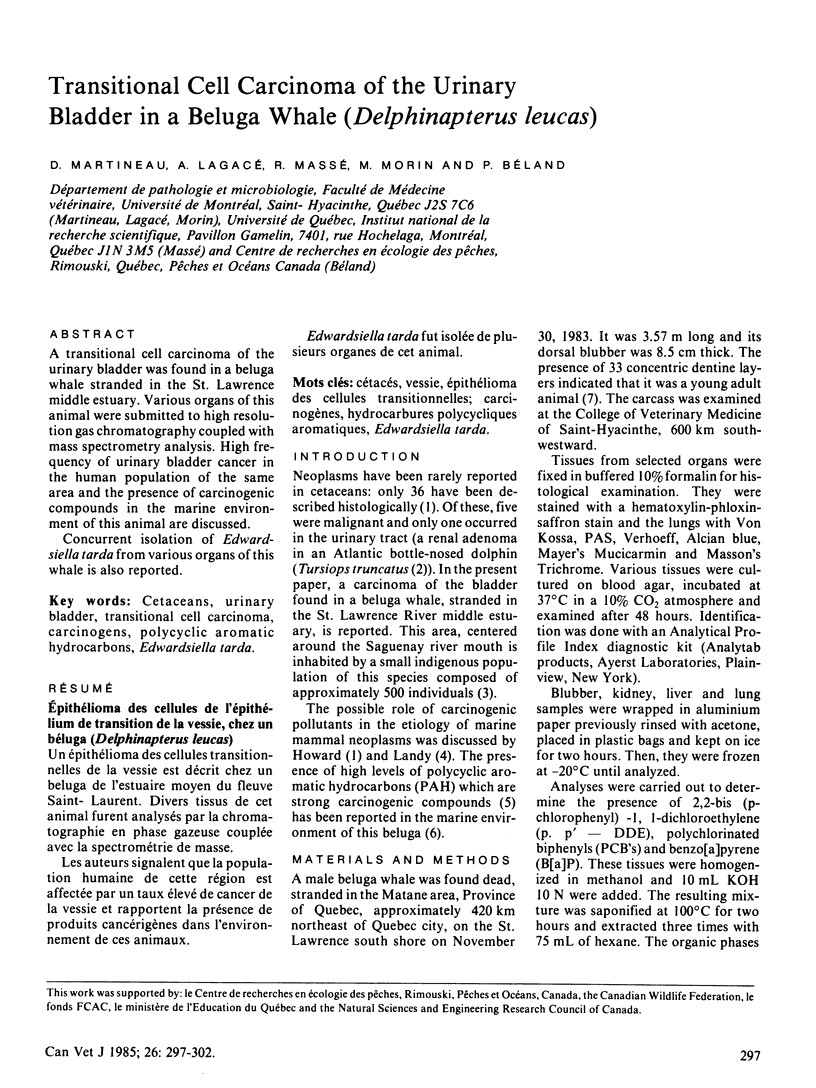
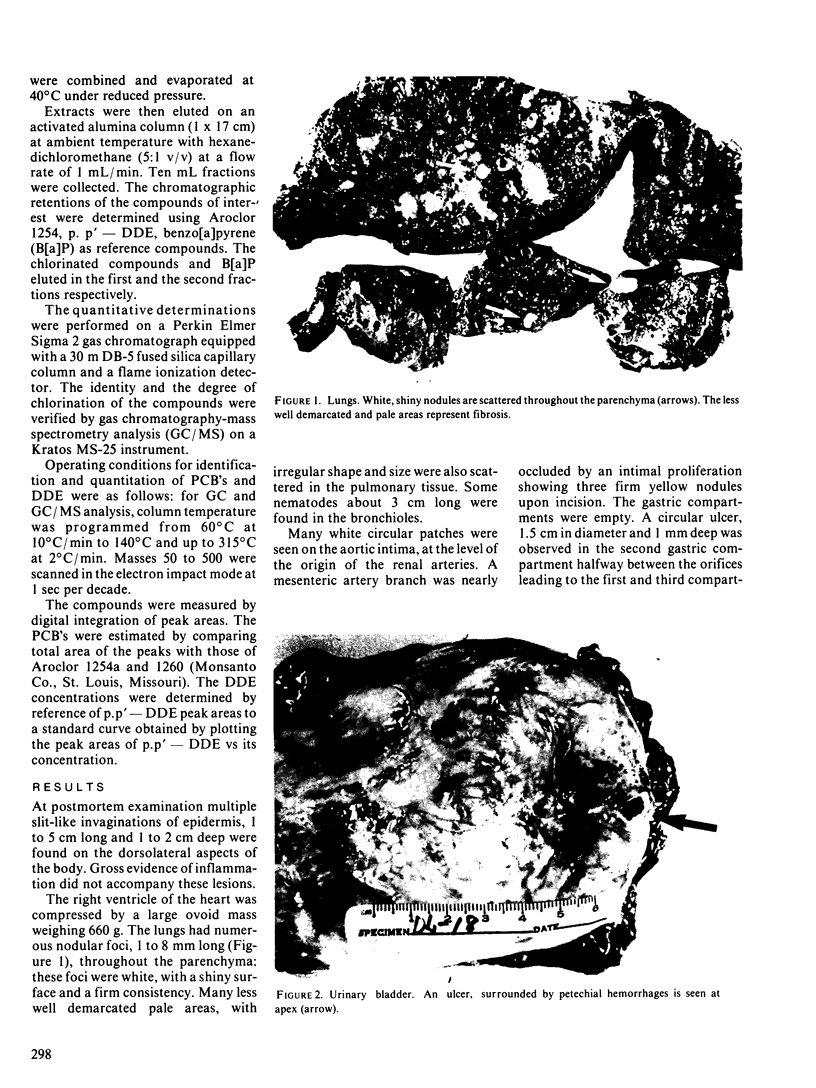

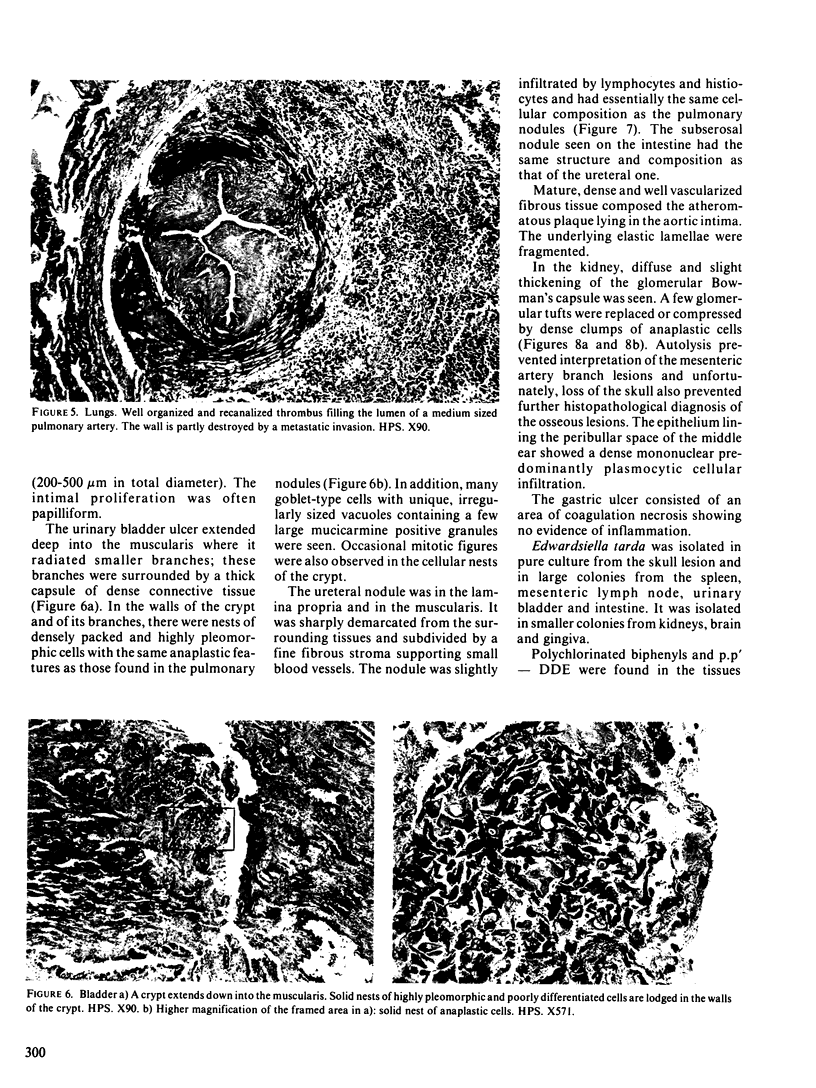
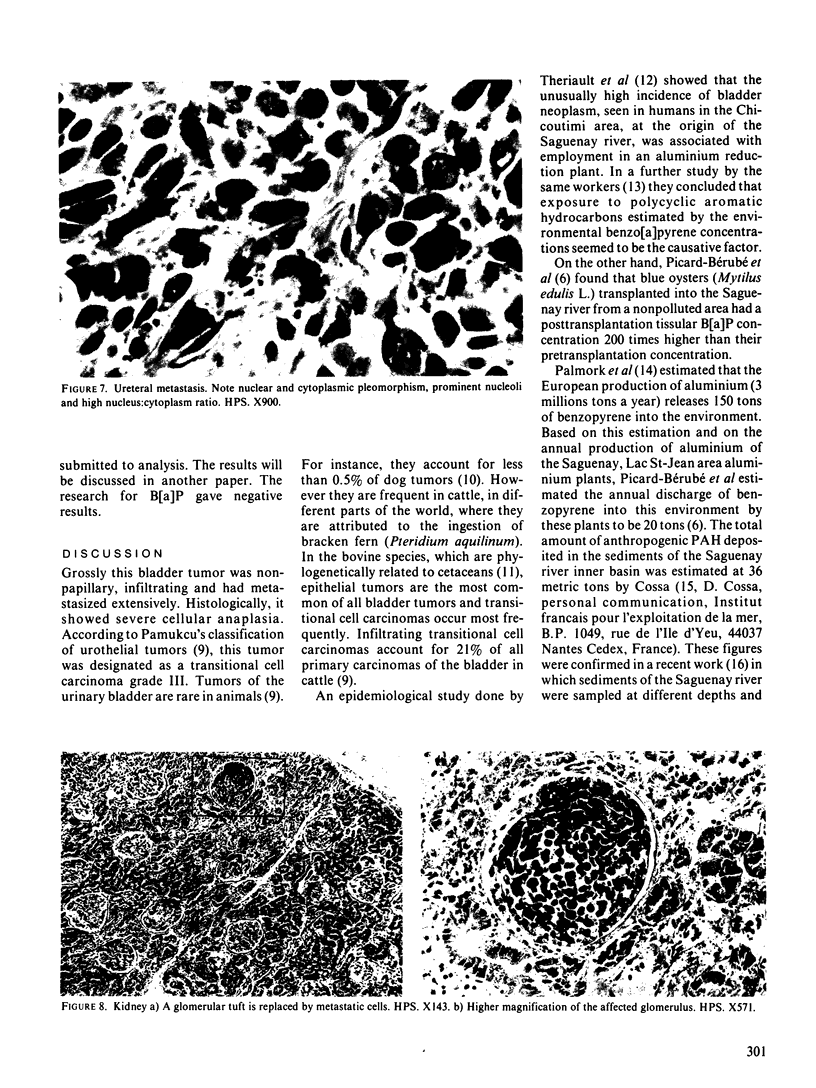
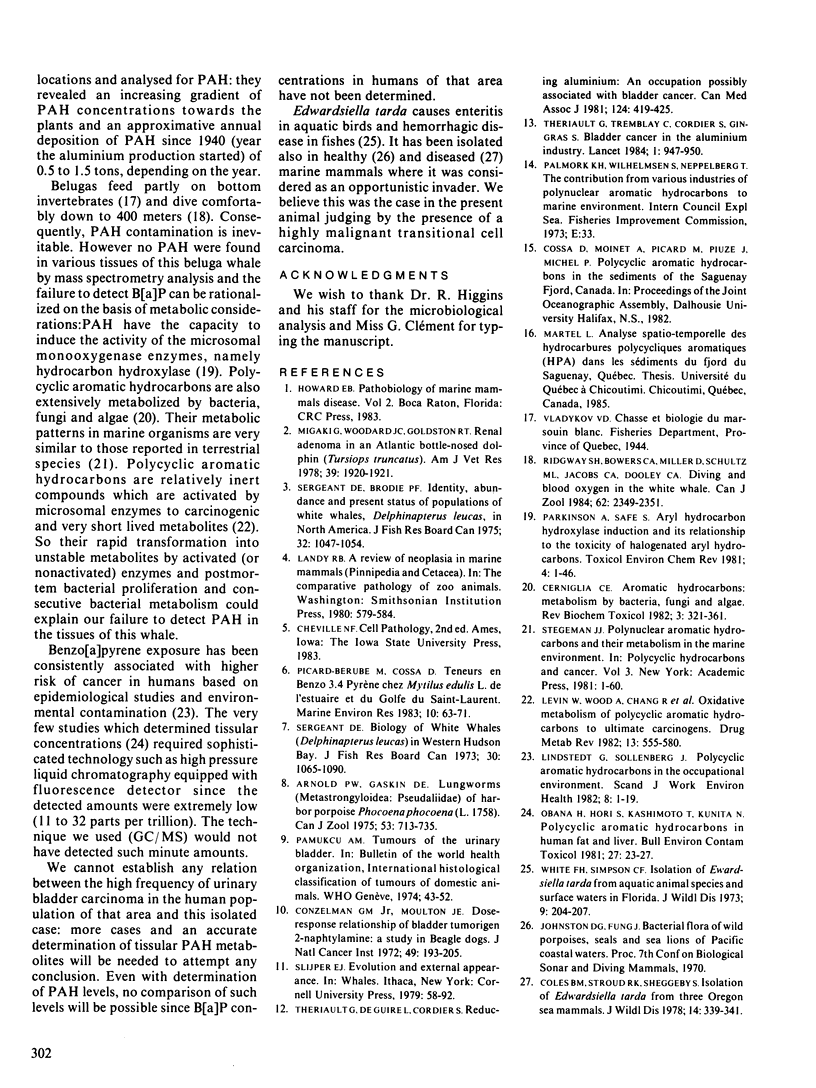
Images in this article
Selected References
These references are in PubMed. This may not be the complete list of references from this article.
- Arnold P. W., Gaskin D. E. Lungworms (Metastrongyloidea: Pseudaliidae) of harbor porpoise Phocoena phocoena (L. 1758). Can J Zool. 1975 Jun;53(6):713–735. doi: 10.1139/z75-087. [DOI] [PubMed] [Google Scholar]
- Coles B. M., Stroud R. K., Sheggeby S. Isolation of Edwardsiella tarda from three Oregon sea mammals. J Wildl Dis. 1978 Jul;14(3):339–341. doi: 10.7589/0090-3558-14.3.339. [DOI] [PubMed] [Google Scholar]
- Conzelman G. M., Jr, Moulton J. E. Dose-response relationships of the bladder tumorigen 2-naphthylamine: a study in beagle dogs. J Natl Cancer Inst. 1972 Jul;49(1):193–205. [PubMed] [Google Scholar]
- Levin W., Wood A., Chang R., Ryan D., Thomas P., Yagi H., Thakker D., Vyas K., Boyd C., Chu S. Y. Oxidative metabolism of polycyclic aromatic hydrocarbons to ultimate carcinogens. Drug Metab Rev. 1982;13(4):555–580. doi: 10.3109/03602538209011087. [DOI] [PubMed] [Google Scholar]
- Lindstedt G., Sollenberg J. Polycyclic aromatic hydrocarbons in the occupational environment: with special reference to benzo[a]pyrene measurements in Swedish industry. Scand J Work Environ Health. 1982 Mar;8(1):1–19. doi: 10.5271/sjweh.2503. [DOI] [PubMed] [Google Scholar]
- Migaki G., Woodard J. C., Goldston R. T. Renal adenoma in an Atlantic bottle-nosed dolphin (Tursiops truncatus). Am J Vet Res. 1978 Dec;39(12):1920–1921. [PubMed] [Google Scholar]
- Obana H., Hori S., Kashimoto T., Kunita N. Polycyclic aromatic hydrocarbons in human fat and liver. Bull Environ Contam Toxicol. 1981 Jul;27(1):23–27. doi: 10.1007/BF01610981. [DOI] [PubMed] [Google Scholar]
- Thériault G., De Guire L., Cordier S. Reducing aluminum: an occupation possibly associated with bladder cancer. Can Med Assoc J. 1981 Feb 15;124(4):419-22, 425. [PMC free article] [PubMed] [Google Scholar]
- Thériault G., Tremblay C., Cordier S., Gingras S. Bladder cancer in the aluminium industry. Lancet. 1984 Apr 28;1(8383):947–950. doi: 10.1016/s0140-6736(84)92399-7. [DOI] [PubMed] [Google Scholar]
- White F. H., Simpson C. F., Williams L. E., Jr Isolation of Edwardsiella tarda from aquatic animal species and surface waters in Florida. J Wildl Dis. 1973 Jul;9(3):204–208. doi: 10.7589/0090-3558-9.3.204. [DOI] [PubMed] [Google Scholar]










